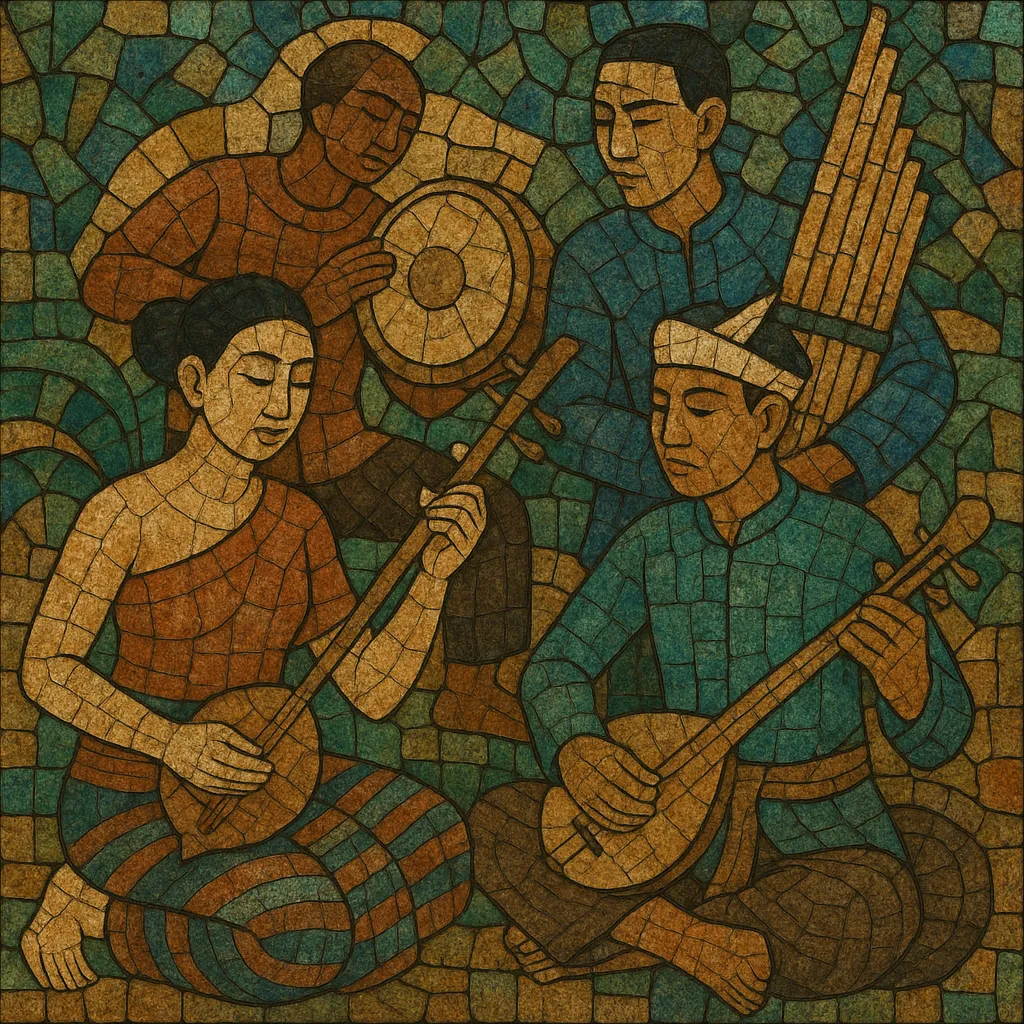Thai folk music refers to the diverse regional traditions of rural Thailand, encompassing the singing styles, instruments, dance-songs, and storytelling practices of the North (Lanna), Northeast (Isan), Central Plains, and South.
It features distinctive timbres such as the khaen (free-reed mouth organ), phin (lute), salo (fiddle), sueng (plucked lute), khlui (bamboo flute), and various drums and gongs. Melodies are often heterophonic (multiple instruments ornamenting the same tune simultaneously), with flexible rhythm and rich vocal ornamentation. Lyrics are commonly delivered in regional dialects and focus on daily life, love, humor, and social commentary, often in call-and-response or improvised, strophic forms.
While deeply rooted in village contexts, Thai folk music has continually adapted—fueling modern popular genres and remaining central to festivals, theater forms, and communal celebrations.
Thai folk music developed over centuries within agrarian communities, where music accompanied work, ritual, courtship, and festival life. Distinct regional identities formed: Lanna (North) traditions emphasize khap vocal styles and ensembles with salo, sueng, and khlui; Isan (Northeast) centers on lam singing with the khaen; the Central Plains host pleng choi and ramwong circle dances; the South features Nora dance-theater and shadow-puppet (Nang Talung) songs.
These practices were shaped by interregional exchange with Lao/Isan, Khmer, Malay, Mon, and Chinese communities, producing shared scales, instruments, and poetic forms. Folk music largely remained oral, with tunes and texts transmitted through apprenticeship and communal participation.
From the 19th century onward, folk and court/classical traditions (e.g., piphat and Thai classical repertories) informed one another, with instruments and melodic types crossing settings. In the mid-20th century, urbanization and broadcasting brought rural styles to national audiences. Folk idioms strongly influenced luk thung (“Thai country”), while the Isan lam tradition modernized into stage and amplified forms.
Post-1960s, amplification, recording, and radio/TV transformed performance contexts. Folk-derived styles (e.g., mor lam, kantruem) migrated from village fairs to theaters and national stages, and later to cassette/VCD circuits and digital platforms. Protest/“for life” songs (phleng phuea chiwit) drew on folk narratives and modalities to address social issues.
Today, Thai folk music thrives in festivals, cultural centers, and online, both in traditional forms and in hybrids with pop, rock, and electronic music. Its instruments, vocal techniques, and poetic frameworks continue to shape Thai popular genres and diaspora performance, sustaining a living link between local identities and national culture.


